This paper discusses a lateral bone loading device. It mentions a capacity of 40N which I think won’t be enough for lengthening purposes as since lengthening post growth plate senesence is an abnormal task it probably requires very abnormal stimuli. It’s interesting to look at the device though.
The study mainly mentioned the technical design of the device and no analysis of the applications.
A Mechatronic Loading Device to Stimulate Bone Growth via a Human Knee
“This paper presents the design of an innovative device that applies dynamic mechanical load to human knee joints. Dynamic loading is employed by applying cyclic and periodic force on a target area. The repeated force loading was considered to be an effective modality for repair and rehabilitation of long bones that are subject to ailments like fractures, osteoporosis, osteoarthritis, etc. The proposed device design builds on the knowledge gained in previous animal and mechanical studies. It employs a modified slider-crank linkage mechanism actuated by a brushless Direct Current (DC) motor and provides uniform and cyclic force.”
Here’s an example of what slider crank linkage looks like:
“The functionality of the device was simulated in a software environment and the structural integrity was analyzed using a finite element method for the prototype construction. The device is controlled by a microcontroller that is programmed to provide the desired loading force at a predetermined frequency and for a specific duration. The device was successfully tested in various experiments for its usability and full functionality. The device works according to the requirements of force magnitude and operational frequency. This device is considered ready to be used for a clinical study to examine whether controlled knee-loading could be an effective regimen for treating the stated bone-related ailments{Hopefully bone length is one of those bone-related ailments unfortunately Ping Zhang’s name is not on this paper and he was always the one more interested in bone length}.”
“When a specific loading force is applied to the epiphyses of the femur and tibia, the trabecular bone tissue, which is characterized by axial stress resistance, resists this force from the opposite direction. This results in deformations in that area. These deformations create a variation of the fluid pressure in the intramedullary cavity. This pressure gradient allows the flow of fluids that carry essential nutrients to the bone cortex initiating osteoblast differentiation and osteogenesis, thus helping in repair and regeneration of the bone tissue. This unique reaction makes this procedure an effective treatment for bone rehabilitation. It helps in reduction of healing time of bone fractures and hastens recovery from bone-related injuries and diseases. The lateral stress application is also less strenuous to the knee bone and reduces the amount of force that needs to be applied to get this result.”
B is the force we’re looking for. The pressure generated by fluid flow not just on the bone but on the stem cells to initiate chondrogenic differentiation. The pressure on the intact bone may also allow the creation of cartilage canals to enable that requirement for a neo growth plate.
It’s also interesting to note that in the proposed knee loading device the load the entire lateral area of the epiphysis this may be a way to reduce slippage.
” it was decided that the proposed device should be robust enough to produce different magnitudes of linear force up to a maximum of 40 N”<-Since lengthening is not being considered in this study forces required for lengthening may be higher.
The device doesn’t look wide enough for the knee really. The dimensions of the device listed are:
| Length: 0.3 | m |
| Width: 0.1 | |
| Height: 0.2 |
There are about 39 inches in a meter so about 3.9 inches in width. I don’t know if that’s enough.
Also the device looks more like this kind of clamp:
Then the other clamps we’ve been using. Although you’d have to make new pads to actually adjust to knee. Well actually more like:
But the pipe gets in the way of getting around the knee. Although I’m not really sure that a pipe clamp is superior to the other clamps. I’m just pointing out that it’s the clamp that looks most like the design mentioned in the study.
Here’s some more details on the device:
Here’s an actual physical prototype:
Here’s an update on that device:

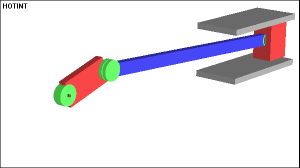
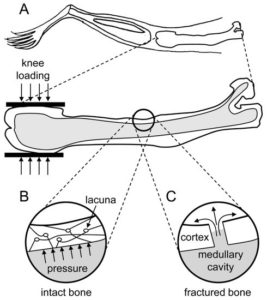
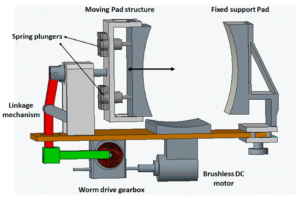
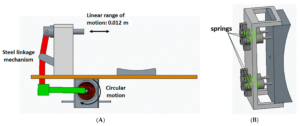
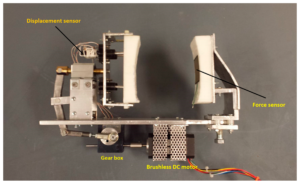
Keep up the good work Tyler,i know how hard it is man.If there are any articles on the future of growth plate regeneration please post as I’d enjoy those,most especially your grow-taller series were my favourite so if you have any new supplements/research chems e.t.c you have found please let us know! I’d also really enjoy reading more stuff about the spinal growth as i feel like it’s an issue less covered compared to limbs and LSJL
Interesting read on Glucosamine sulfate
http://www.scielo.br/scielo.php?script=sci_arttext&pid=S1807-59322014001200847
Hey Admin any updates on Alexander Teplyashin, Eben Alsberg and Tracy Ballock ?
Hey in relation to ben Alsberg and Tracy Ballock research on growth plate regeneration, it’s stopped. This is because they have no lab due to not enough funding requiring $200k (assuming USD) per year.
This information is from my personal communication with Dr. Ballock.
I reckon if we can pool together funds it’d be great.
I like to correct that it’s stopped indefinitely. Having no lab due to not enough funding requiring $200k (assuming USD) per year is one of the reasons it stopped. There might be other reasons but only they know for sure.
If it’s only money I was thinking about crowding funding their research if they’re keen on that. Garnering interest and spreading the word would be a start.
Another thing regarding stem cell to induce growth and some opinions of others regarding Alexander Teplyashin:
https://www.quora.com/Can-autologous-cell-therapy-revive-growth-plates-in-adults
Basically from what I understand from the writer is that Alexander Teplyashin has no scientific evidence that stem cell injections can increase human height. Furthermore, he has a commercial interest in it and there can be risk that patient is not aware of.
Next is from what I interpreted from another poster you can replace “healing” with “growing”:
If (stem) cells can be used to “heal” someone, it implies there is the area affected has no way to resist the effects of the cells.
I infer the above as because cells grow and multiply there are other mechanisms in the body that limit the grow to a “safe” level. If it was easy to introduce other cells (in this case stem cells) that means there is little to no resistance in controlling the cells.
This then introduces the problem of when does the newly introduced cells know when to stop “healing”. If they keep growing uncontrollably that is practically similar to behaviour of a cancer.
This is meant to be from a neutral stance and making one aware of the complexities involved. Acknowledging that can direct the right effort to resolve a problem. If there are questions I’ll try to answer but I think this is as far as my understanding goes.